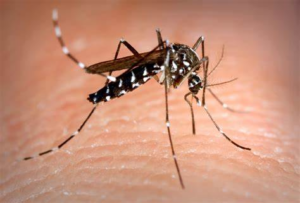The silent signs of colorectal cancer
4 min read
Awareness
Awareness of the earliest or silent symptoms of colorectal cancer could help you receive diagnosis at an earlier stage, when outcomes are better. Pay attention, and consult a healthcare provider if you have concerns.
XX and XY
In humans, as well as many other mammals, females have two X chromosomes, and men have one X and one Y chromosome.
Chromosomes
Looking at human biology at its most basic, we can break it down like this: in the nucleus (control center) of a human cell, each DNA molecule is packed into a long thread called a chromosome.

Most human cells contain 23 pairs of chromosomes, with half of these coming from each parent. There are 22 pairs of “autosomes,” while the last (23rd) pair are the sex chromosomes.
Y chromosome
A symbol of masculinity, the Y chromosome is determined paternally. The sex of humans and other mammals depends on the gene passed on by the male.
Deterioration
Unless we evolve to produce a new sex gene, the degeneration of the Y chromosome could eventually lead to our extinction as a human race.
Gene function
The X chromosome contains around 900 genes that do all kinds of jobs. In comparison, the Y chromosome contains about 55 genes, as well as repetitive DNA that doesn’t seem to have a function.
Gene function
However, the Y chromosome remains important. It contains a gene that’s responsible for starting male development in the embryo.
This is because the Y chromosome contains the SRY gene, which acts as a “master switch” for the development of human testes (male gonads).
Conception
Around 12 weeks after conception, these genes turn on to make male hormones (testosterone and its other derivatives), ensuring the baby develops as a boy.
Identification
The SRY gene and its action was first identified in 1990. It was discovered that it triggers a genetic pathway beginning with something called the SOX9 gene, which determines the male sex in all vertebrates.

A fundamental flaw
In the early days of our species, the Y chromosome was the same size as the X chromosome, and it contained all the same genes.
However, it seems that Y chromosomes have a fundamental flaw. Other chromosomes have two copies in each cell, allowing genes to recombine and lose harmful mutations.
Father to son
Y chromosomes are only ever present as a single copy, passed on from fathers to their sons. This means that the “shuffling” of genes doesn’t happen from one generation to another.
Degeneration
Without the benefits of recombination, Y chromosomal genes degenerate over time and are eventually lost from the genome.
Slowing gene loss
Despite this, it appears the Y chromosome has some mechanisms to slow down the rate of gene loss. One Danish study sequenced the Y chromosome from 62 men and found interesting results.
Gene amplification
The results showed the Y chromosome is prone to large-scale, structural rearrangements, allowing for something called “gene amplification.”
This amplification allows the Y chromosome to acquire multiple copies of genes that promote healthy sperm function and mitigate gene loss.
Palindromes
What’s more, it appears the Y chromosome has developed things called “palindromes”—sequences that read the same forwards as well as backwards.
These palindromes protect the gene from degrading further. Researchers recorded a high rate of “gene conversion events” within palindromic sequences.
Gene conversion events
These events are a copy and paste process within the gene. They allow for damaged genes to be repaired using an undamaged copy as a template.
Disappearance
Whether the Y chromosome will disappear or not is a matter of debate in the scientific community. Some feel the mutations taking place are enough to save it, while others argue its demise is inevitable.
Adaptation in nature
There is some good news, however: it’s already happened to the male vole in Eastern Europe and the spiny rat in Japan, and they’ve adapted.
These rodents have developed a new male-determining gene in an evolutionary response to the decline of the Y chromosome.
Good news
The good news is that even if the Y chromosome does eventually die out, it doesn’t necessarily mean men themselves will disappear.
Normal human reproduction
Even if the Y chromosome did disappear, males and females are both still necessary for human reproduction.
Assisted reproduction
Interestingly, many of the genes the Y chromosome carries are not necessary when you use assisted reproduction methods.
Genetic engineering
This could mean that genetic engineering could be used to find a replacement to the function of the Y chromosome. If this happened, it could allow same-sex couples or infertile men to conceive.
Natural reproduction
However, even if this became possible, it’s unlikely humans would one day collectively decide to stop reproducing naturally.
We just don’t know
Right now, it’s uncertain that the Y chromosome will disappear at all. And even if it does, we have a few million years to figure it out!
Sources: (ScienceAlert) (IFLScience) (Deseret News) (AAAS) (Indy100)
Source: The Y chromosome is deteriorating at an alarming rate, science says (msn.com)


